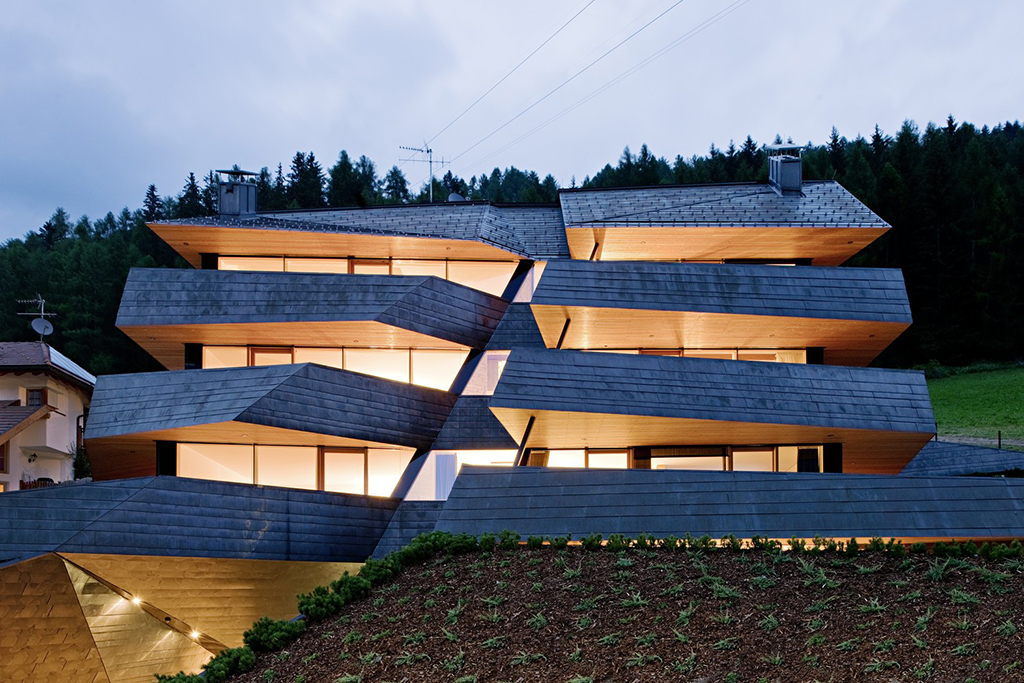DOLOMITENBLICK
-
The building is located on a hillside in the Dolomites, at the edge of a residential area. The volume was in part determined by the functional elements required to host six independent apartments with a common circulation core.
A formal incision marks the main access and the division of the units, splitting the main volume in two halves. Apart from its functional connotations, this incision becomes the defining element of the building. From either side of the cut, a strip unfolds to form the balustrade of a generous covered balcony that merges with the surrounding topography. Following the steep natural hillside with each floor, the strips and the façade jump back.
Programme
The building hosts six generous holiday homes, all directed to catch the southern sun and the panoramic view of the Dolomites. Each unit is designed to maximize privacy through the splitting of the building volume into two parts, and through the stepped balustrades which block the terrace spaces from views from the unit above and from passers-by. Each apartment enjoys an extension of the internal living area through a covered, sun- and view-facing terrace which terminates in a small private garden. Local larch wood defines internal and external living areas. Floor to ceiling glazing allows for maximum views and solar gain. External sun shades and overhangs from the balconies above minimize overheating during the Summertime.
The main circulation–a continuation of the formal incision–is very compact and repeats the use of the local larch wood and colour code from the façade.
Material
Sited at the edge of a residential area with a very eclectic appearance, Plasma Studio generated a volume which grows out of its surrounding topography and blends into it by reducing the material palette to a very local, almost vernacular, code: larch wood and pre-oxidized copper. Both the copper and the larch wood are subject to a natural change in colour by the atmospheric influence of sun, rain and snow. By borrowing from the colour palette of nearby farmhouses with dark, sunburned larch wood façades, the building blends into its natural surroundings.
Attention was given to the design of the copper balustrades which stem from the natural topography, and wrap around to meet the building at the central incision, peel off again and end once more in the surrounding topography. When peeling off, the metal sheets, divided into horizontal strips, describe a curved hyperbolic-paraboloid geometry. Here, the craftsman's knowledge is showcased to its full extent.
The dark copper surrounds the volume from all sides. The strips form a second skin, offering shelter and defining the roof as a continuation of the overall façade and building volume. The form of the roof itself draws on the local planning regulation which allows only a pitched roof for this specific building plot. Slightly deformed, it merges with the design concept as well as with the traditional pitched roof typology; not merely through repetition, but rather by exploring its hidden potential.
Photo credits: Hertha Hurnaus
1870 Projects











